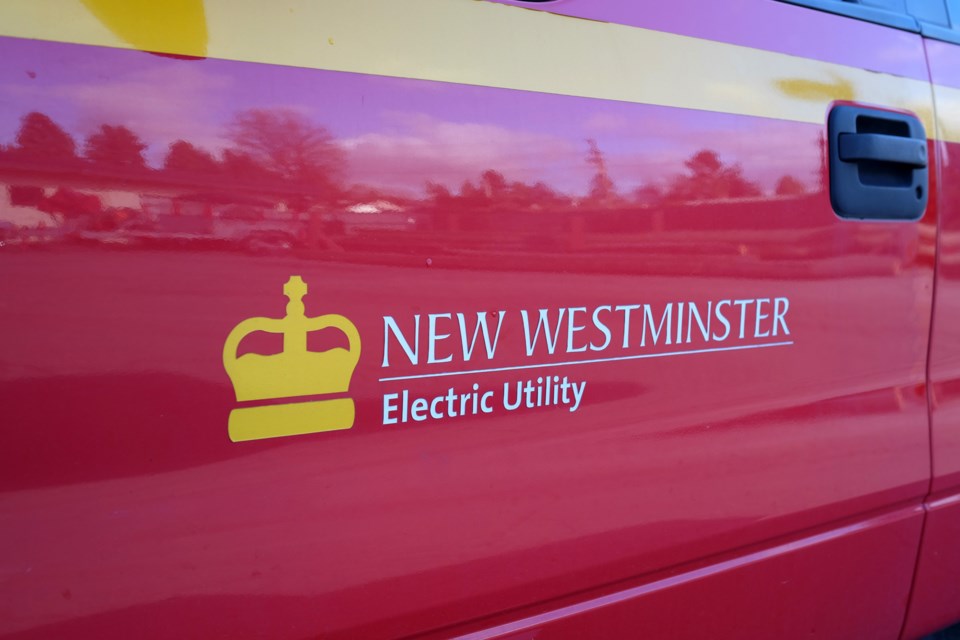The City of New Westminster is reviewing its communications protocols after some residents and businesses were left without power for nearly 24 hours.
The city started receiving calls about a power outage around 7:30 p.m. on Wednesday, May 29. While the city was able to restore power to about 90 per cent of the residences and businesses hit by the outage in parts of the Glenbrook, Queen’s Park and Massey-Victory Heights neighbourhoods before midnight, some properties around McBride Boulevard and Eighth Avenue were without power until about 6:30 p.m. the following day.
Rod Carle, general manager of the electrical utility, said crews were able to determine on Thursday morning that the cause of the power outage was a burnt splice to an aging cable near the bottom of a manhole. Once the source of the outage was confirmed, crews got to work to restore power.
“As always, we try our best,” Carle said. “We are trying the most-efficient, cost-effective way of getting it back on in a safe manner. The big thing for us is safety, particularly in underground cable.”
Carle said crews have to follow WorkSafeBC safety protocols when working with electricity.
“The key message for me is we have a safety protocol we have to follow. It’s about keeping our employees and our linemen and our servicemen safe,” he said. “We are going to do whatever we can to make sure that happens.”
During the power outage, some residents voiced concern on social media about a lack of communication from the city about when power would be restored.
One resident took to Twitter to suggest the city should have a recorded message on its after-hours outage line to let people know the city is aware of the outage and is working on it. She residents were left in the dark on two counts – with no lights and no information about whether the city was aware of the issue.
Carle met with the city’s communications and IT staff on Tuesday to discuss potential changes to existing protocols. Plans are afoot to improve the way information about power outages is communicated to residents and businesses via social media.
“We are trying to get (information) out quicker. …Our priority is to try and get the power back on,” he said. “The communication group has indicated, if we give them the first heads up, they will take it from there.”
The electrical department will also be working with the IT department to address challenges faced by people calling to report power outages.
“They are going to look into where the phone issues are. We end up getting overload,” Carle said. “We are hoping to have some answers there.”
As a result of the power outage, some residents questioned if they’d get a reduction on their utilities bill for the day without power. Others questioned whether they’d be compensated for food in their fridges and freezers that went bad during the power outage.
Carle said anyone who believes they should be compensated can send in a claim to the city’s risk management group, which considers the requests.
“We are trying to focus just on the operations of the utility,” he said of the electric utility. “We do have an electric utility bylaw that says we do not guarantee power.”
In the event of a power outage, Carle urges people to avoid opening their fridge or freezer to see if the light is on as food will stay good at least for a full day, if not a couple of days, if the door isn’t opened.
While the city gets complimented “all the time” about the infrequency of power outages in New Westminster, Carle said it can take time to locate the source of the outages when they do occur.
“A lot of it is underground cable, so you can’t really spot any faults,” he said. “What we do is we patrol the area first to see if there is anything obvious.”
From there, he said it’s a “process of elimination” that requires crews to patrol the underground vaults and search for the source of the problem. He said “it’s quite a process” when crews are working around live voltage.
“We have to make sure we are doing everything safe,” he said. “When you get into underground cable, as nice as it looks being underground, it is probably the hardest and most difficult area to find when there are faults.”



